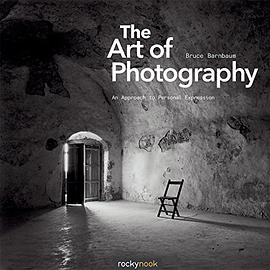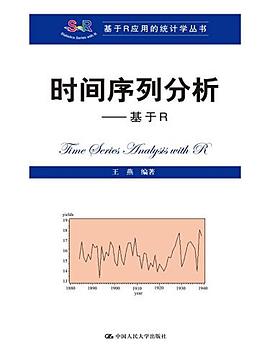The Art of Photography
内容简介
This is an updated and newly revised edition of the classic book The Art of Photography (originally published in 1994), which has often been described as the most readable, understandable, and complete textbook on photography. With well over 100 beautiful photographic illustrations in both black-and-white and color, as well as numerous charts, graphs, and tables, this book presents the world of photography to beginner, intermediate, and advanced photographers seeking to make a personal statement through the medium of photography. Without talking down to anyone, or talking over anyone's head, Barnbaum presents "how to" techniques for both traditional and digital approaches. Yet he goes well beyond the technical, as he delves deeply into the philosophical, expressive, and creative aspects of photography so often avoided in other books.
Bruce Barnbaum is recognized as one of the world's finest landscape and architectural photographers, and for decades has been considered one of the best instructors in the field of photography. This latest incarnation of his textbook, which has evolved, grown, and been refined over the past 35 years, will prove to be an ongoing, invaluable photographic reference for years to come. It is truly the resource of choice for the thinking photographer.
......(更多)
作者简介
Bruce Barnbaum, of Granite Falls, WA, entered photography as a hobbyist in the 1960s, and after four decades, it is still his hobby. It has also been his life's work for the past 30 years.
Bruce's educational background includes Bachelor's and Master's degrees in mathematics from UCLA. After working for several years as a mathematical analyst and computer programmer for missile guidance systems, he abruptly left the field and turned to photography.
Bruce has authored several books, some of which have become classics. The Art of Photography was first published in 1994 and remained in print until 2007. Bruce has been self-publishing the book ever since, but with limited distribution (until now).
Bruce is a frequent contributor to several photography magazines. His series "The Master Printing Class" is featured in each issue of Photo Techniques, and his articles are published regularly in LensWork. Through his workshops, articles, lectures, books, and innovative photography, Bruce has become a well-known and highly-respected photographer, educator, and pioneer.
Bruce is recognized as one of the finest darkroom printers on this planet, both for his exceptional black and white work, as well as for his color imagery. He understands light to an extent rarely found, and combines this understanding with a mastery of composition, applying his knowledge to an extraordinarily wide range of subject matter. His work is represented by more than ten galleries throughout the United States and Canada, and is in the collections of museums and private collectors worldwide.
Bruce has been an active environmental advocate for more than three decades, both independently and through his involvement and leadership with organizations such as the Sierra Club, the National Audubon Society, the Stillaguamish Citizens' Alliance, 1000 Friends of Washington, and the North Cascades Conservation Council.
......(更多)
目录
Acknowledgements;
Chapter 1: Communication Through Photography;
1.1 Enthusiasm;
1.2 Judging Your Own Personal Response;
Chapter 2: What is Composition?;
2.1 How the Human Eye Sees;
2.2 Unified Thought;
2.3 Simplicity;
2.4 Expressing Your Own Point of View;
2.5 Simplicity vs. Complexity;
Chapter 3: Elements of Composition;
3.1 Contrast and Tone;
3.2 Line;
3.3 Form;
3.4 Line, Form, Contrast, and Emotion;
3.5 Pattern;
3.6 Balance;
3.7 Movement;
3.8 Positive/Negative Space;
3.9 Texture;
3.10 Camera Position;
3.11 Focal Length of Lens and Cropping;
3.12 Depth of Field;
3.13 Shutter Speed;
3.14 Relationships;
3.15 Involvement with the Scene;
3.16 Rules, Formulas, and Other Problems and Pitfalls;
Chapter 4: Visualization;
4.1 Step 1: Photographic Looking and Seeing;
4.2 Step 2: Composing an Image;
4.3 Step 3: Envisioning the Final Print;
4.4 Step 4: Planning a Strategy for a Final Print;
4.5 How Your Eye Differs from Your Camera;
4.6 Alternative Approaches;
Chapter 5: Light;
5.1 Looking at Light;
5.2 Exercises in Learning to See Light More Accurately;
5.3 Light Determines Form;
5.4 Types of Lighting/Quality of Light;
5.5 Light as Seen by the Eye and by Film or Sensors, and the Inverse Square Law;
Chapter 6: Color;
6.1 The Color Wheel and Color Sphere;
6.2 Color Composition;
6.3 Color and Emotion;
6.4 Color Contrast and Tone;
6.5 Choosing A Color Film;
6.6 Color Digital Methods;
6.7 Light and Color Control;
6.8 Subjectivity and Mood of Color;
6.9 In Summary;
Chapter 7: Filters;
7.1 Black-and-White Filters;
7.2 Examples with a Hypothetical Landscape;
7.3 Contrast Control with Filters;
7.4 Digital Filtration for Black-and-White;
7.5 Infrared Film and Filters;
7.6 Filters for Color Images;
7.7 Neutral Density and Polarizing Filters;
7.8 Problems Associated with Polarizers;
Chapter 8: The Zone System of Exposure for Film;
8.1 A Brief Overview;
8.2 Film’s Response to Light: Building the Zone System;
8.3 Translating Negative Densities to Print Tonalities;
8.4 The Light Meter—How it Works;
8.5 Review of Negative Exposure Procedure;
8.6 Using the Zone System to Depart from Reality;
8.7 The Zone System for Color;
8.8 The Zone System and the Inverse Square Law;
8.9 In Summary;
Chapter 9: The Black-and-White Negative and Contrast Control—The Extended Zone System;
9.1 Chapter 9 Overview;
9.2 The Negative During Development;
9.3 The Bellows Analogy;
9.4 Putting Higher Zones to Work;
9.5 Reciprocity Failure;
9.6 Examples of Decreasing and Increasing Contrast;
9.7 The Exposure/Density Curve and Zone 4 Shadow Placement;
9.8 Differences Between Photography and Sensitometry: Texture vs. Tone and Zone 4 Shadow Placement;
9.9 Pre-Exposure—What It Is, Where It Works, Where It Fails;
9.10 Developing the Exposed Negative;
9.11 Explanation of Compensating Development;
9.12 Two-Solution Compensating Development for Negatives;
9.13 Development Procedures for Sheet Film and Roll Film;
9.14 The Zone System and Roll Film;
9.15 Negative Materials and Developers;
Chapter 10: The Print;
10.1 Black-and-White Enlarging Papers;
10.2 Variable Contrast vs. Graded Papers;
10.3 Fiber Base Papers vs. Resin Coated (RC) Papers;
10.4 Black-and-White Paper Developers;
10.5 Making Contact Proof Prints;
10.6 Preliminary Work Toward a Final Print;
10.7 Make Test Prints, Not Test Strips;
10.8 Two-Solution Development for Graded and Variable Contrast Papers;
10.9 Dodging and Burning;
10.10 Integrating the Entire Process: Visualization, Exposure, Development, and Printing;
10.11 Burning with Variable Contrast Papers;
10.12 Advanced Darkroom Techniques;
10.13 Inspection, Evaluation, and the Myth of “Dry-Down”;
10.14 Potassium Ferricyanide Reducing (Bleaching);
10.15 Final Fixing of the Image;
10.16 Local vs. Overall Contrast Control;
10.17 Scale;
10.18 Selenium Toning Prints;
10.19 Other Toners;
10.20 Chemical Coloration;
10.21 Full Archival Processing of Prints;
10.22 Toning, Intensifying, and Reducing Negatives;
10.23 Cold, Neutral, and Warm Tone Papers;
10.24 Review of Contrast Controls;
10.25 Color Printing;
10.26 Color Contrast Reduction Masking;
10.27 Masking to Alter Color Intensities;
10.28 The Shadow Mask;
10.29 Spotting and Rebalancing Color for Color Prints;
10.30 Washing and Drying Color Prints;
10.31 Achieving Proper Color Balance;
Chapter 11: The Digital Zone System;
11.1 Basics of Digital Capture;
11.2 The Sensor’s Useful Brightness Range;
11.3 The Histogram—The Heart of the Digital Zone System;
11.4 The RAW Converter—Processing the RAW Capture;
11.5 High Dynamic Range Images—The Extended Zone System for Digital Photography;
11.6 Practical Considerations, Cautions, and Recommendations;
Chapter 12: Presentation;
12.1 Dry Mounting Prints;
12.2 Making Positioning Guides for Print Placement;
12.3 Spotting, Etching, and Correction of Defects;
12.4 Print Finishing;
Chapter 13: Exploding Photographic Myths;
13.1 Myth #1: The zone system gives you a negative that yields a straight print of exactly what you saw in the field, with no burning or dodging required;
13.2 Myth #2: There are 10 zones in the zone system;
13.3 Myth #3: Shadows should be placed at Zone 3 in the zone system;
13.4 Myth #4: Negative densities should be within a fixed density range, and negatives that don’t fit into that range are useless;
13.5 Myth #5: All contact proof prints of negatives should be made at the same exposure;
13.6 Myth #6: The best landscape photographs are made within an hour and a half of sunrise or sunset;
13.7 Myth #7: All black-and-white photographs need a good black, a good white, and tones in between;
13.8 Myth #8: Two More Persistent Myths;
Chapter 14: Photographic Techniques and Artistic Integrity;
14.1 Art, Communication, and Personal Integrity;
Chapter 15: Photographic Realism, Abstraction, and Art;
15.1 Photography as Fine Art;
15.2 Photography and Painting—Their Mutual Influence;
15.3 The Strength of Abstraction;
15.4 Inwardly and Outwardly Directed Questions;
15.5 The Power of Photography;
Chapter 16: Thoughts on Creativity;
16.1 Obstacles to Creativity;
16.2 Prerequisites for Creativity;
16.3 Producing Something New—Its Real Importance;
16.4 Be Prepared for Imagination, Innovation, and Creativity;
Chapter 17: Approaching Creativity Intuitively;
17.1 Intuition in Science;
17.2 Avoiding Intuition;
17.3 Understanding and Misunderstanding Intuition;
17.4 Examples of the Intuitive Approach;
17.5 Applying Intuition to Your Photography;
17.6 Conclusion;
Chapter 18: Toward A Personal Philosophy;
18.1 Flexibility;
18.2 Visual Arts;
18.3 Nonvisual Arts;
18.4 Expanding and Defining Your Interests;
18.5 Limitations of Photography;
18.6 Developing a Personal Style;
18.7 Self-Critique, Interaction, and Study;
Testing Materials and Equipment for Traditional Photography;
ASA (ISO) Test;
Contrast Development Test;
Lens Sharpness and Coverage Test;
Bellows Test;
Safelight Test;
Enlarger Light Uniformity Test;
Enlarger Lens Sharpness Test;
Enlarger Light Sources
......(更多)
读书文摘
拍摄之前,需要明确自己的兴趣和激情所在,然后忠实于自己的想法去创作。 其次,找到自己对眼前景象的反映,明确促使自己拿出相机的原因和感受(系统1)。然后仔细思考如何把自己内心通过相片最大化的反映出来,并去除干扰。
......(更多)






